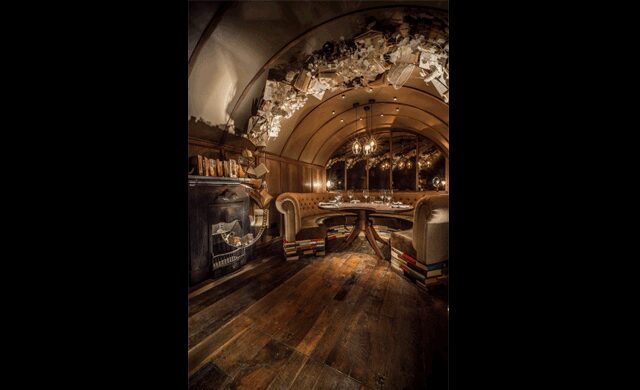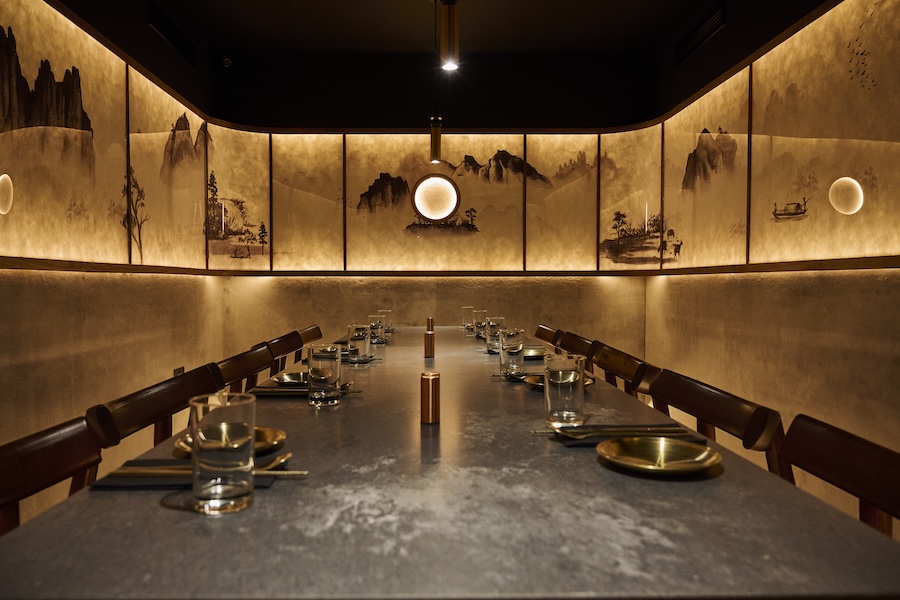New London eatery Hide reinterprets the theme of dwelling across three distinctive floors—Above, Ground, and Below—that are each connected via a whimsical spiral staircase. The restaurant’s material palette ascends from dark and textured below ground, to light and smooth. Multidisciplinary London design firm These White Walls crafted Hide with stonewashed plaster, tarnished brass, rustic timbers, and bronze mirrors to convey an organic sense of earthiness and understated elegance reflective of chef Ollie Dabbous’ raw, botanical cuisine.
Exploring the theme of hide and seek, Above exudes a fresh and ethereal quality with bespoke, light oak furnishings. Artist Rachel Dein was tasked with crafting a botanical plaster mural, detailed with various trinkets as well as flowers and leaves. The main dining room, Ground, is conceived with an informal flair focused on the restaurant’s wood-fired bakery. Darker oak furnishings with naturalistic curves showcase traditional carpentry methods through a contemporary lens. Moss artists The Clorofilas adorned the walls with sculptural compositions of fungi and lichen. The basement, Below, is anchored by a bespoke bar crafted from ancient burr wood filled with a copper resin. Three private dining rooms are also installed in the basement.
Hide also houses the Reading Room, which features a story arch designed by artist Stu Blackwell with a sculptural form comprising folded cookbook pages. The Broken Room reflects the influence of the Japanese art form of Kintsugi, which involves repurposing handthrown ceramics, while the walls of the Shadow Room are adorned with plaster Corbels inspired by decorative fireplaces in the John Soane Museum. Traditional fine art sculptors have also outfitted the space with hidden portraits of the restaurant’s owner and chef.
Here Design oversaw branding for Hide as well.



